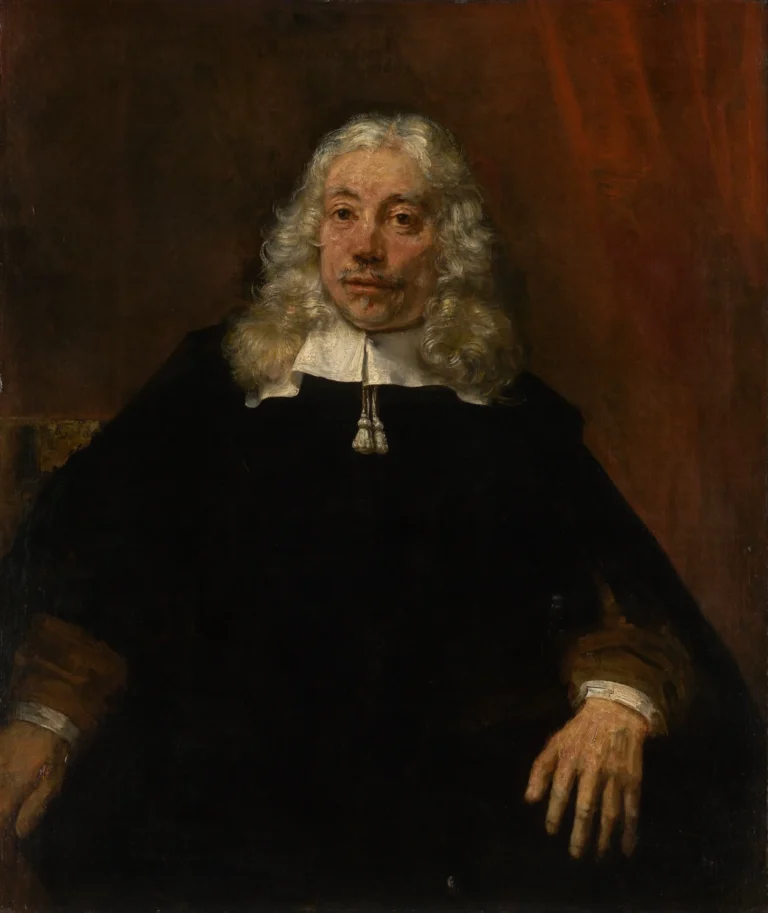Portrait of a White-Haired Man
Rembrandt van Rijn, one of the greatest painters in European art history, delivered profound character studies through his portraits of men with long hair. 'Portrait of a White-Haired Man' showcases a detailed older gentleman dressed in black, set against a striking red backdrop, reflecting the artist's skill in highlighting both texture and emotion. In contrast, 'Bust of a Young Bearded Man' emphasizes an intense expression achieved through vigorous brushwork, while the 'Bust of a Bearded Old Man' features a character study employing chiaroscuro to convey emotional depth. These artworks reflect not only individual identity but also the social context of 17th-century Netherlands.
1667
About the Artwork
Did You Know
Liked what you see? Add it to your collection.
Enjoyed reading? Share it.
... continued
Portrait of a White-Haired Man
This painting, executed in 1667, depicts an older man with long white hair styled in the fashion of the later 17th century. The man is dressed in contemporary black attire and sits in an armchair against a neutral background with a swathe of red drapery behind him. The painting is notable for its detailed face and the contrast between the detailed facial features and the broader brushwork on the drapery and clothing.
Bust of a Young Bearded Man
This painting features a young man with a curly, unruly mop of hair and a somewhat scraggly beard. The subject is believed to be an Ashkenazi Jew, given his facial features and the neighborhood where Rembrandt lived. The painting is characterized by rapid, expressive brushwork and a complex layering of paints that capture the sitter's intense and psychologically acute countenance.
Bust of a Bearded Old Man
While not specifically focused on long hair, this small oil sketch from around 1630-1631 depicts an elderly man with curly hair falling over his wrinkled forehead. The sketch is a tronie (a character study) and is notable for its bold execution and the use of chiaroscuro to convey the man's emotional energy.










